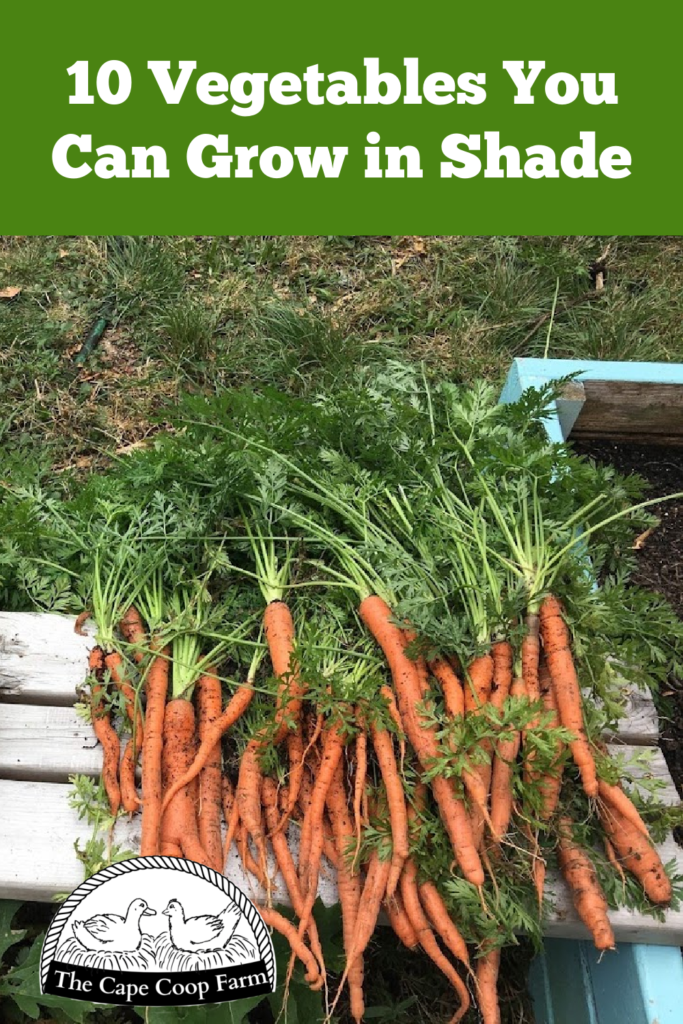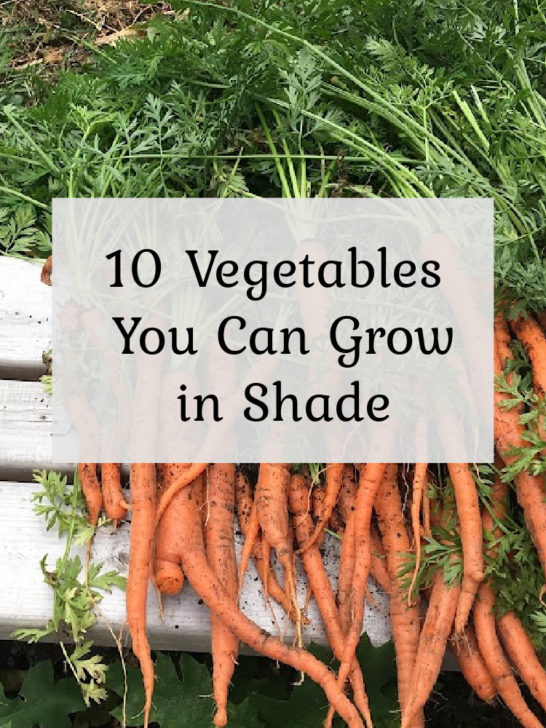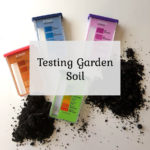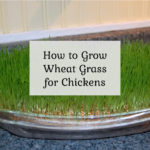---------------------------------------------------------
There is nothing better than growing your own food! If you have a shady yard, it can be very frustrating. Even with the best soil and constant care, if you can’t provide most vegetables with full sun they will never perform their best. But keep reading! There are some vegetables you can grow in shade!
When looking to start a vegetable garden, it’s important that you understand the sunlight conditions of your yard. There are handy gadgets that you can place in your proposed garden spot that will record the amount of sunlight for you, or you can simply chart it yourself using your eyeballs and a pen & paper. Keep in mind seasonal changes will affect your garden. If you graph the sunlight conditions in the middle of winter, be aware of the changes that will occur when nearby trees leaf out. Additionally, as the earth rotates throughout the year the sun/shady spots in your yard will shift slightly. If at all possible, measure sunlight conditions as close to the time of year you will be growing as possible.
Sunlight Conditions
Full Sun – this means the spot receives at least 6 hours of direct sunlight per day. For northern gardeners (like me), the sunlight is not as strong as our southern friends. I find the best results with 8 hours of direct sunlight to consider a spot “full sun”. Most vegetables that produce their harvest from flower blossoms (tomatoes, squash, peppers, cucumbers, etc) require full sunlight.
Partial Sun/Shade – this area of the yard will receive 3-6 hours of direct sunlight per day or “dappled” sunlight for 6-8 hours. Dappled sunlight means the light is filtered down in between tree leaves. Root vegetables (potatoes, carrots, onions, etc) do fine with partial shade.
Full Shade – this area receives no direct sunlight. It may have periods of dappled, or reflected sunlight. Leafy greens (lettuce, kale, chard, etc) like shade and will turn bitter if grown in full sun.
Deep Shade – this area receives no direct, dappled, or any sort of sunlight. Deep shade is not suitable for growing vegetables (or most plants)
In order to give your shade garden the best possible chances you will want to amend the soil with plenty of compost. Performing a soil test is a great way to gauge what other amendments will be helpful. click here to learn more about soil testing.
Watering your shade garden
Shade gardens have different watering requirements compared to full sun. Because the sun isn’t evaporating the water as quickly, you will find that you don’t need to water as often. Keep in mind that the object throwing shade could be preventing rain from reaching your plants (like under a tree canopy). If the shade is being cast by a large tree nearby, I would recommend you set your garden up as a raised bed. Not only will you have tree roots to contend with when planting, but your plants will be competing for moisture and nutrients with the tree.
Good news for owners of shady yards! I’ve got a list here of 10 awesome vegetables you can grow in full or partial shade!
Lettuce
Most lettuce – romaine, iceberg, loose leaf – are all great candidates for a shady garden. Seeds can be direct sown in late spring or started indoors. The bonus to growing your salad greens in the shade is that it is easy to do a second harvest for fall by planting in late summer/early fall depending on your climate. The shade also keeps the roots cooler so you can continue harvesting most of the summer. Lettuce grown in full sun tends to bolt or grow bitter. Check your seed packet, some lettuce varieties can grow in full shade, some need partial shade. Lettuce has shallow roots so is well suited to containers, raised beds, or in ground planting.
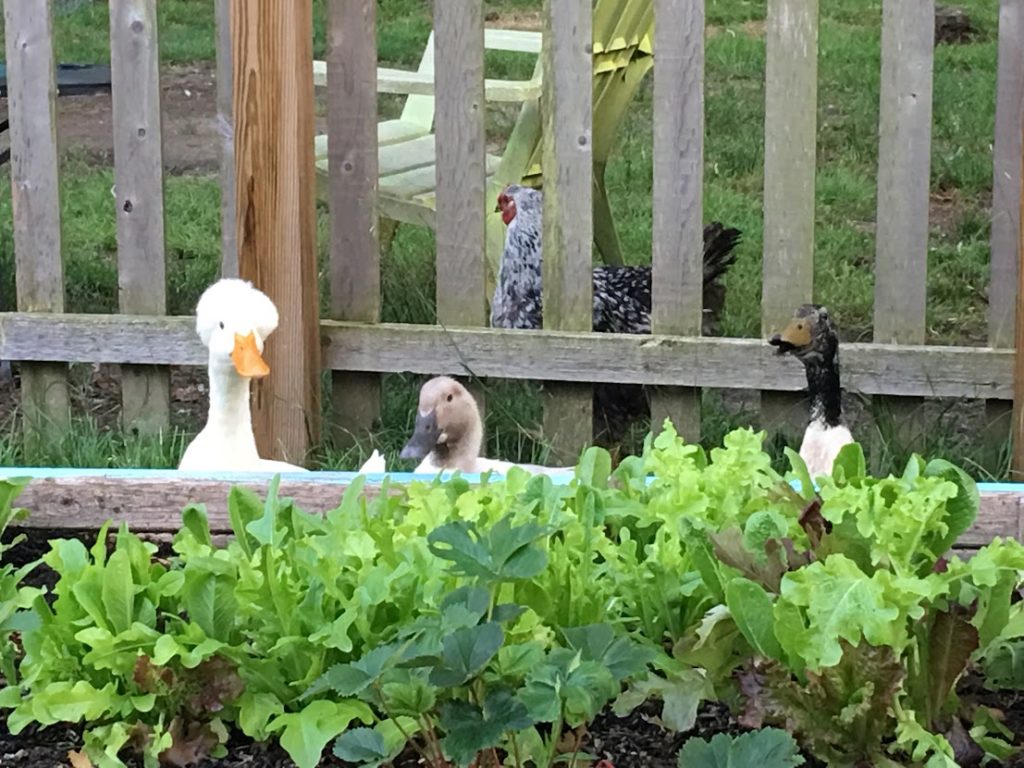
Broccoli
Broccoli will need at least a little sun – but will grow well with a full day of dappled sunlight. It likes to keep its roots cool so spring & fall are ideal times to grow broccoli. A partially shaded location will allow it to keep growing into the summer. Broccoli prefers slightly acidic soil with a pH of 6 or 7. Harvest when the flower buds are tight, before they bloom (it turns bitter after that).
Radish
Another cold season crop, growing radishes in the shade will extend the growing season for you. Radishes are grown for both their root & the greens and take only about 20 days to mature. They are a great candidate for succession sowing – planting new seeds every 2 weeks. Radishes are hardy & fast growing so are one of the easiest veggies to grow as long as the conditions are right!
Carrots
Carrots are the sweetest when their roots are kept cool. Particularly in warm climates, shade can allow carrots to grow. In 30 days most can be harvested as baby carrots, and 60 days for full size carrots. They can be planted again in late summer for a fall harvest. Like most root crops, they don’t transplant well so direct sowing seeds is best. For the best carrots prep the soil up to 10 inches down, removing rocks and loosen the soil. Shallow, frequent watering is best for carrots.

Brussels Sprouts
The opposite of radishes, brussels sprouts take a long time to mature. Typically planted in the spring, they are harvested in the fall after the first frost. A partially shady location will help them survive the hot summer months without turning bitter. Because they take so long to mature, you will want to make sure they have rich, loose soil with plenty of aged compost.
Snap Peas
Peas will grow in full sun in northern climates, but partial shade will allow gardeners in warmer climates to enjoy peas as well. The vines tend to wither in the hot summer sun. Grown in partial shade, peas will be slower to mature. Direct sow seeds once the danger of frost has past. Both bush & climbing peas will benefit from having a support system. Bush peas get to be 2-3 feet, but the climbing varieties can be 6-8 feet and will need a tall trellis (click here to see how to build an inexpensive trellis for peas). Peas like well drained soil with a neutral or slightly alkaline soil with a pH of 6-7.5.

Kale
Kale is a cold season crop that when grown in full summer sun will get tough & bitter. Growing it in partial shade extends the growing season. After about 30 days you can harvest baby kale, the leaves will be full size in 60 days. Kale likes rich, loose, soil with plenty of compost, and a slightly alkaline pH of 6.5-7. Kale grows best when planted in the spring and then again in late summer to avoid the warmest parts of summer.
Potatoes
Potatoes will grow in full sun, but will also grow in partial shade. The potatoes may be smaller when grown in shade. Potatoes take a long time to mature, depending on the variety anywhere from 70-120 days. They can be direct sown in the ground in spring as soon as the soil can be worked, and typically harvested in the fall. For the best looking spuds you will want loose, well drained soil. They like cool soil that is on the acidic side (pH 5.5-6.5). Potatoes grow well in deep containers or raised beds, or in the ground as long as the soil is properly prepared.

Spinach
When grown in full summer sun, spinach will bolt. Growing spinach in partial shade allows a longer growing season. Spinach is an ideal plant for both spring & fall sowing and can be both started indoors or direct sown. You can harvest baby spinach in about 30 days and full leaves in about 45 days. If you only harvest the outer leaves, the plant can continue to grow and produce. Spinach prefers alkaline, well drained soil.
Celery
Celery is a slow growing crop that prefers cool soil and it is best to keep the stalks shaded. Too much sun and the stalks will not flesh out properly and will be bitter. There are two types of celery – trenching celery is planted in trenches and requires mounded soil around the roots and lower stalks. As the celery grows, the mound needs to grow in order to blanch the celery. Self blanching celery can be grown in blocks and is the easier variety to grow (especially for beginners!). The seeds are small and the germination takes a long time, so I personally think it’s easier to just begin with already started plants. Celery likes a lot of water so keep the soil moist.
